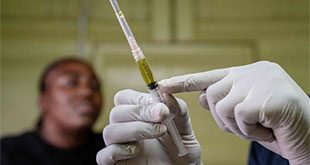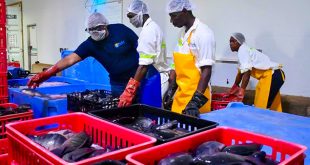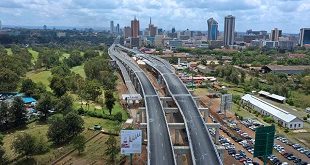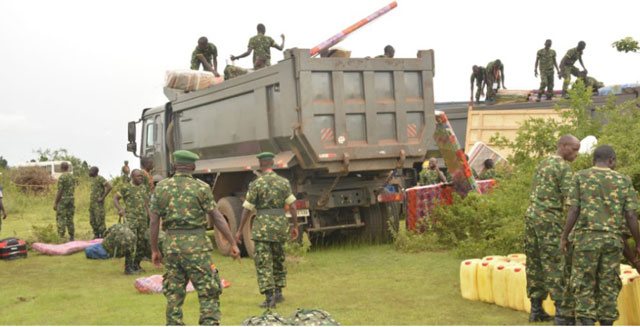
Why should regional armies cooperate everywhere but on battlefield?
COVER STORY | IAN KATUSIIME | The 12th East African Armed Forces Field Training Exercise that took place in Jinja, eastern Uganda is a symbol of the resolve East African states have towards joint regional security matters. The two week exercise which ended on June 10 included troops from all the East African Community (EAC) partner states Uganda, Tanzania, Rwanda, Burundi, South Sudan, and Kenya. The EAC’s newest member, the Democratic Republic of Congo (DRC), sent 10 observers.
The activity had, as Head of Exercise, Ugandan Maj. Gen. Don Nabaasa; a former head of the Special Forces Command (SFC) of the Uganda Peoples Defence Forces (UPDF).
The exercise was conducted in accordance with the EAC Protocol on Cooperation in Defence Affairs under the theme, `Promoting Peace, Security and Stability towards the East African Community Integration’.
The aim of the exercise was to enhance the capabilities of the partner states Defence Forces to jointly combat complex security challenges faced in the region.
The main objective of the exercise was to train the partner states’ armed forces, police, civilian components and other stakeholders in planning and conducting an integrated mission encompassing peace support operations, disaster management, counter terrorism, and counter piracy.
Holding the joint forces exercises points in the direction of building a combined regional military standby force. This would be a multi-national force along the lines of the Economic Community of West African States (ECOWAS) Standby Force or the NATO Response Force. These are high-readiness forces comprising land, air, sea and special forces units capable of being deployed quickly. The NATO force is 40,000 strong.
Holding the joint forces exercises, instead of pushing for the loftier goal of a EAC Regional Standby Force, prompts questions on their relevance.
Holding them, even as some of the same forces such the Rwanda Defence Forces (RDF) and the Armed Forces of the Democratic Republic of the Congo (FARDC) are engaged in open hostilities, prompts questions on their usefulness.
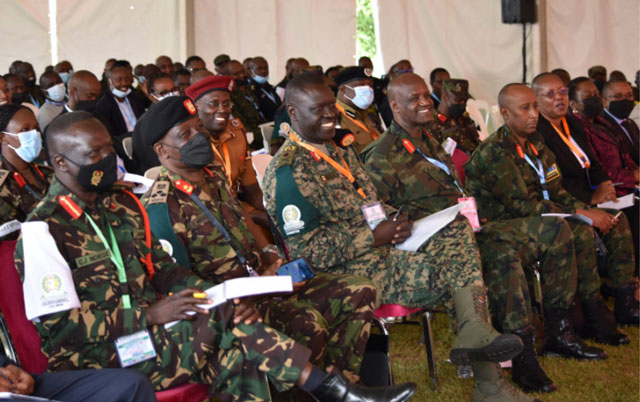
The barest minimum ambition should be setting up a regional joint military taskforce. This would signal the readiness of the seven EAC member states to pursue a harmonious military agenda. Such a taskforce could jointly handle the regional challenges of peace support operations, disaster management, counter terrorism, and counter piracy, albeit in an ad hoc rather than as a standby force.
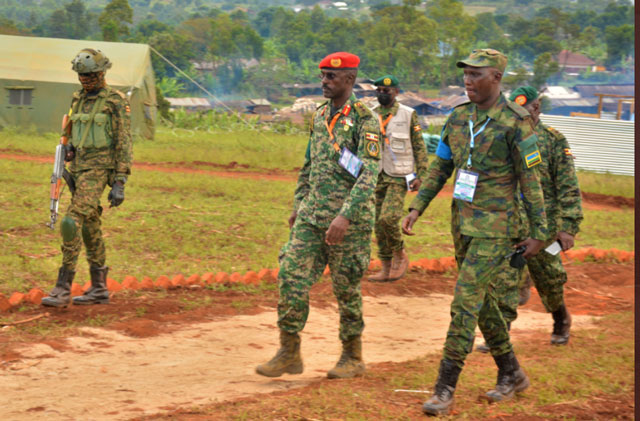
The current procrastination over the formation of either the EAC Standby Force or an EAC Joint Military Taskforce casts doubt on the relevance of other joint regional armed forces collaboration, such as under the wider Eastern African Standby Force (EASF) or even the American-founded Combined Joint Task Force – Horn of Africa (CJTF-HOA) based in Djibouti which has operations in Sudan, Somalia, Ethiopia, Eritrea, Seychelles and Kenya, and has operations in Mauritius, Comoros, Liberia, Rwanda, Uganda and Tanzania.
The EASF is a regional organisation whose mandate is to enhance peace and security in the Eastern Africa region. So far, however, its impact and significance remains debatable.
The military component of the force was launched in 2014 in Addis Ababa, Ethiopia and presided over by then Prime Minister Mariam Desalegn. Uganda’s then Chief of Defence Forces Gen. Katumba Wamala and his Rwandan counterpart Gen. James Kabareebe attended the launch alongside other defence chiefs from the member states.
The EASF has ten members and includes Ethiopia, Djibouti, Comoros, Seychelles, Sudan, Somalia, plus the original six EAC member states excluding DRC. Despite much talk initially about no longer requiring the need of external help for peace and security interventions in Eastern Africa, the force appears to be only in name.
The EASF has not been deployed since then to quell fighting in any of the region’s flare ups such as the 2015 coup attempt in Burundi or the fighting that broke out in South Sudan in 2016. Neither has any semblance of the force been deployed in the region’s hotspot; the eastern DRC where the latest round of clashes broke out in May.
An estimated 17000 have been displaced in the fighting and dozens killed in clashes between the M23 militia and the DRC government troops. Similarly, the mandate of the EASF could not be invoked as Ethiopia descended a deadly into civil war in 2020.
In 2014, Prime Minister Desalegn said the mandate of the force would not just be limited to peace support operations but intervention in member states when called upon by the very members. Eight years later, the ten member states have failed to put together a capable fighting force for the much needed peace operations in the eastern Africa region and beyond.
In spite of constant meetings and a fully-fledged secretariat in Nairobi, the EASF appears to have failed to make headway. It is also located in a region of strategic importance to world powers.
Information is scanty on the force’s numbers, or capabilities and equipment in a region where states are keen to project their power. Apart from Brig. Vincent Gatarama, a Rwandan national, listed as the Commander, there is little else about the Force. Brig. Henry Isoke, a Ugandan, is formerly the Head of Peace Operations.
The website of the force is inundated with entries on the force receiving an array of equipment such as Rapid Deployment Kits, satellite communications equipment, from donors like Denmark. However, all this is received by the secretariat in Nairobi, Kenya and not the actual force with any infantry brigades, drills on operating equipment or displays in modern warfare.
Instead, forces of member states of the EASF are involved in different operations where their troops are deployed in different arrangements where the EASF has no say.
Djibouti hosts several foreign military bases including the U.S. and China while Somalia has the largest peace keeping operation where the EASF has had no input in terms of administration, coordination or strategic advice. Ethiopia is a contributor to the peace mission in Somalia where Uganda, Burundi, Kenya are also part.
Cash strapped
A meeting held in Kampala in December 2021 by the EASF Secretariat captured the predicament the force finds itself in. “The organisation is fairing badly and may ground to a halt if the member states fail to urgently honour their contributions,” said Brigadier General Getachew Shiferaw Fayisa, Director of the EASF Secretariat.
Lt. Gen. Peter Elwelu, the deputy Chief of Defence Forces (CDF), known for speaking off-cuff, did not help matters on the status of the force.
“We have not yet operationalised the force but we shall get there,” he told journalists at the meeting. The gathering of the EASF was a Policy Organs Meeting that was meant to forge a way forward after empty coffers, lack of clear leadership, and the go-it-alone attitudes of most member states appeared to have reached a crescendo.
“The Eastern Africa Standby Force Headquarters is made up of regional military and civilian staff on secondment from EASF Member States. It serves as a command headquarters for force preparation and operational command of the Standby Force,” reads a statement on the force’s website.
“Upon deployment, the Force comes under the operational control of the African Union or the United Nations, as applicable. It works with PLANELM to prepare the mission Force Headquarters’ structure and plans,” it adds.
PLANEM is Planning Element and serves as a multi-national and multidimensional full time planning headquarters for EASF within the framework of the African Standby Force (ASF). PLANEM is headquartered in Nairobi. But the African Standby Force (ASF) also remains largely on paper since it was mooted almost 20 years ago.
According to the site, PLANELM seeks to establish a Force capable of planning and preparing for complex Peace Support Operations (PSO) that include reconnaissance, mounting, deployment and employment of up to a brigade size force including police and other civilians components in a theatre of operations to address the six scenarios defined within the Policy Framework for the Establishment of the ASF.
However there has been consistently no mention of the EASF in solving the complicated puzzle of peace and stability in eastern Congo. 4,000 Ugandan troops have been stationed in eastern DRC since November to flush out the Allied Democratic Forces (ADF) who hide there.
The 12th edition of the EAC Armed Forces Field Training Exercise dubbed Ushirikiano Imara (meaning `solid cooperation’ in Kiswahili) at Gaddafi barracks, in Jinja district is ideally what the EASF should be doing but the drill is an EAC arrangement. The UPDF says the exercise garnered 1533 participants and incudes civil military cooperation activities.
Other players
Most of the interventions in East and the Horn of Africa regions have instead relied on institutions like Inter-governmental Authority on Development (IGAD), International Conference on the Great Lakes Region (ICGLR).
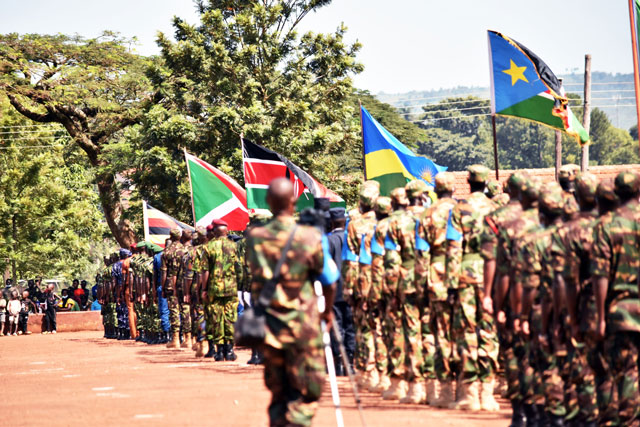
When fighting broke out in December 2013 after South Sudan President Salva Kiir fell out with his deputy Riek Machar, it was IGAD which was vital in hammering out agreements and forging a way forward for the young nation.
But even then, it was President Museveni who held all the cards over the country as he had deployed UPDF troops in Juba, South Sudan’s capital to save Kiir’s government from collapse. IGAD said the Ugandan troops had to make a timely withdrawal but the UPDF stayed on in the country for eventualities, long after fierce fighting ended.
For the instability in DRC, member states have relied on the ICGLR to resolves disputes between M23, a mutinying faction and the DRC army.
Ironically, as the EASF remains in limbo, its individual member states have grown and transformed their armies. Ethiopia is the largest contributor to peacekeeping operations worldwide as of December 31, 2021 with 8611 troops according to SIPRI, a global security think tank. It is followed by Uganda at 6162 troops.
The data was released ahead of the International Day of United Nations Peacekeepers on May 29. The SIPRI report did not state where the bulk of Ethiopian peacekeeping troops are but all Uganda’s troops are in the African Transition Mission in Somalia (ATMIS) where it is the leading nation in the mission.
Uganda was the first country to deploy in the UN-backed operations in 2007 and for it, it has earned recognition around the world. In addition, Ugandan troops top Africa as the largest beneficiaries of U.S. military training according to a U.S. government report. It was followed by Rwanda.
The EASF is in the vicinity of the African Transition Mission in Somalia (ATMIS) which is the largest multilateral peace operation in the world with 19384 military personnel. The SIPRI report also had something for the EASF to ponder on. It noted “Along with Somalia (hosting three operations), South Sudan (hosting two operations) and the Democratic Republic of the Congo (hosting one operation), these were the countries or territories with the largest deployments and hosting the largest operations in 2021.”
The above are all countries in the eastern Africa region where the EASF has routine statements on “preparations for future deployment.”
 The Independent Uganda: You get the Truth we Pay the Price
The Independent Uganda: You get the Truth we Pay the Price



